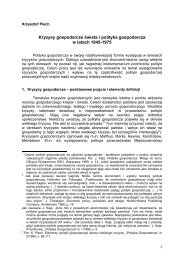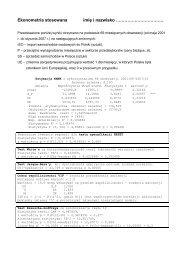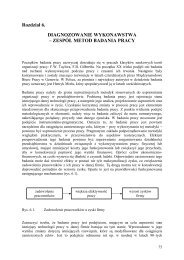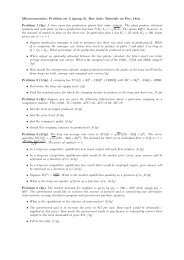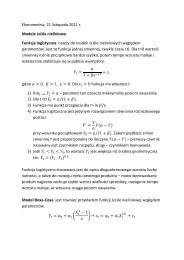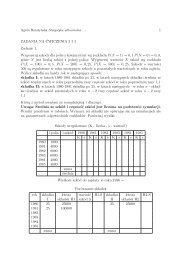“Airbus vs. Boeing in Super Jumbos: A Case of Failed Preemptionâ€Â
“Airbus vs. Boeing in Super Jumbos: A Case of Failed Preemptionâ€Â
“Airbus vs. Boeing in Super Jumbos: A Case of Failed Preemptionâ€Â
Create successful ePaper yourself
Turn your PDF publications into a flip-book with our unique Google optimized e-Paper software.
I. IntroductionIn December 2000, Airbus formally committed to spend $11.9 billion to developand launch a 555-seat superjumbo plane known as the A380. Prior to Airbus’ formalcommitment, <strong>Boe<strong>in</strong>g</strong> had started an <strong>in</strong>itiative to develop a “stretch jumbo” with capacity<strong>in</strong> between its exist<strong>in</strong>g jumbo (the 747) and Airbus’ planned superjumbo, had stopped theeffort, and then had restarted it. After Airbus’ formal commitment, <strong>Boe<strong>in</strong>g</strong> cancelled thestretch jumbo for the second (and apparently f<strong>in</strong>al) time.It is worth digg<strong>in</strong>g deeper <strong>in</strong>to this case, for at least two sets <strong>of</strong> reasons. First, thesuperjumbo is a strategic commitment <strong>of</strong> more than average <strong>in</strong>terest because <strong>of</strong> its sheersize, irreversibility and potential impact on <strong>in</strong>dustry structure. The superjumborepresents one <strong>of</strong> the largest product launch decisions <strong>in</strong> corporate history given Airbus’projected launch cost <strong>of</strong> $11.9 billion (a figure that also represented 26% <strong>of</strong> total <strong>in</strong>dustryrevenues—$45.6 billion—and more than 70% <strong>of</strong> Airbus’ total revenues—$17.2 billion—<strong>in</strong> 2000). 1 The risk<strong>in</strong>ess <strong>of</strong> expenditures <strong>of</strong> this magnitude is magnified by the fact thatAirbus has to spend essentially the entire amount before it makes its first delivery, <strong>in</strong> an<strong>in</strong>dustry <strong>in</strong> which many firms—e.g., Glenn Mart<strong>in</strong>, General Dynamics, and, morerecently, Lockheed—failed as a result <strong>of</strong> bet-the-company product development efforts.If, however, the launch succeeds, Airbus is expected to dislodge <strong>Boe<strong>in</strong>g</strong> as the marketleader <strong>in</strong> commercial aircraft after more than 40 years <strong>of</strong> market dom<strong>in</strong>ance by the latter.The <strong>in</strong>cidence <strong>of</strong> “sporty bets,” to use a term popularized by John Newhouse (1982) <strong>in</strong>his book on the <strong>in</strong>dustry <strong>in</strong> general and the launch <strong>of</strong> the <strong>Boe<strong>in</strong>g</strong> 747 <strong>in</strong> particular,suggests that the commercial aircraft <strong>in</strong>dustry may, more than most, be one <strong>in</strong> whichoutcomes are largely determ<strong>in</strong>ed by a few strategic commitments.Second, the case <strong>of</strong> the stretch/superjumbo happens to share some key structuralfeatures with stylized game-theoretic models <strong>of</strong> preemption. There were only twocompetitors <strong>in</strong> the market for large aircraft and therefore two potential entrants,realistically, <strong>in</strong>to the emerg<strong>in</strong>g niche for very large aircraft (or VLA, def<strong>in</strong>ed as aircraftseat<strong>in</strong>g more than 400 passengers <strong>in</strong> the standard configuration). 2 Competitors’ moveswere clearly del<strong>in</strong>eated by technological lump<strong>in</strong>ess, and exhibited strategic<strong>in</strong>terdependence: thus, it seemed clear that if each competitor developed a brand new1







